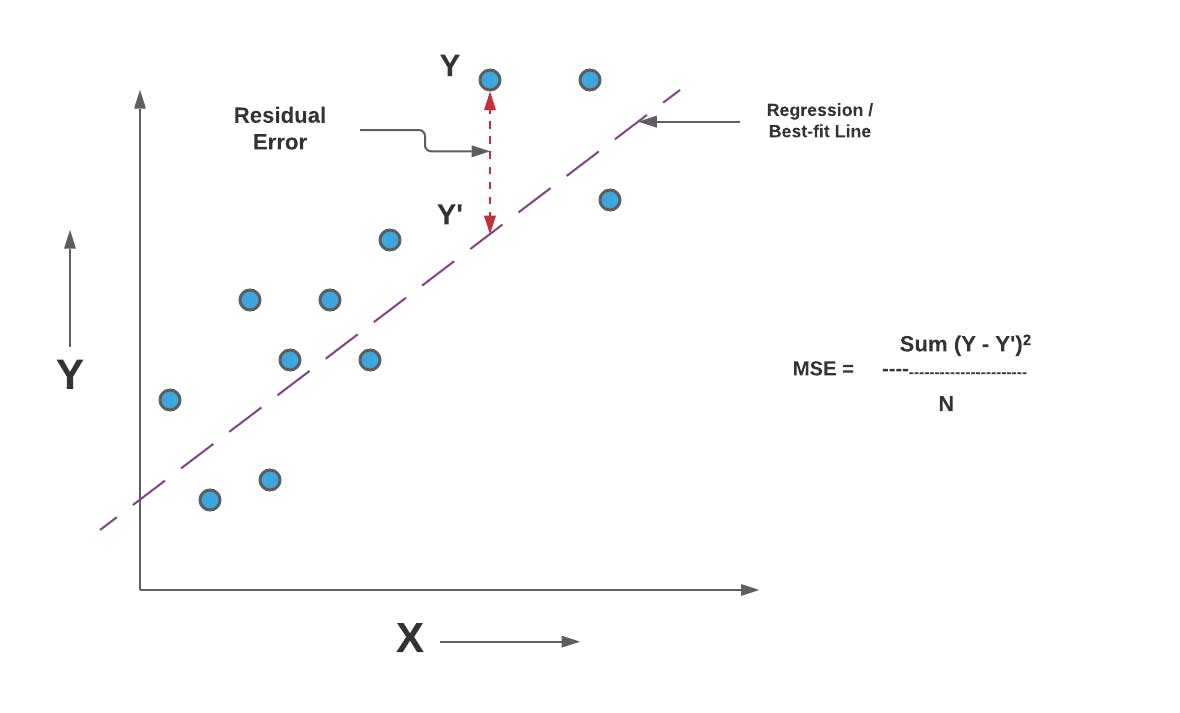Mean Square Error (MSE)
Encord Computer Vision Glossary
In the fields of regression analysis and machine learning, the Mean Square Error (MSE) is a crucial metric for evaluating the performance of predictive models. It measures the average squared difference between the predicted and the actual target values within a dataset. The primary objective of the MSE is to assess the quality of a model's predictions by measuring how closely they align with the ground truth.
Mathematical Formula
The MSE is calculated using the following formula

MSE = Mean Square error
n = Number of Data points
Yi = Observed Values
Y = Predicted Values
Interpretation
The MSE measures the average of the squared differences between predicted values and actual target values. By squaring the differences, the MSE places a higher weight on larger errors, making it sensitive to outliers. A lower MSE indicates that the model's predictions are closer to the true values, reflecting better overall performance.
Use Cases
MSE has widespread application in various scenarios:
- Regression Models: It is extensively used to evaluate the performance of regression models, including linear regression, polynomial regression, and more. The smaller the MSE, the better the model's predictive accuracy.
- Model Selection: In cases where multiple models are considered for a specific problem, the one with the lowest MSE is often preferred as it demonstrates better fitting to the data.
- Feature Selection: By comparing MSE values while including or excluding certain features, you can identify which features contribute significantly to prediction accuracy.

Limitations
While MSE is a valuable metric, it has certain limitations:
- Sensitivity to Outliers: MSE is sensitive to outliers due to the squaring of errors.This may cause extreme values to have a significant impact on the model.
- Scale Dependence: The magnitude of the MSE depends on the scale of the target variable. This can make it challenging to compare MSE values across different datasets.
Here is a simple Python code snippet to calculate and display the Mean Square Error using the scikit-learn library:
import numpy as np
from sklearn.metrics import mean_squared_error
# Simulated ground truth and predicted values
ground_truth = np.array([2.5, 3.7, 4.2, 5.0, 6.1])
predicted_values = np.array([2.2, 3.5, 4.0, 4.8, 5.8])
# Calculate Mean Square Error
mse = mean_squared_error(ground_truth, predicted_values)
print(f"Mean Square Error: {mse}")Output: Mean Square Error: 0.06
In this code, the `mean_squared_error()` function from scikit-learn has been used to calculate the MSE between the ground truth and predicted values.
Join the Encord Developers community to discuss the latest in computer vision, machine learning, and data-centric AI
Join the community